Striking, to say the least, this bird wears a fine suit of turquoise blue, yellow and black!
Meet the Turquoise Tanager
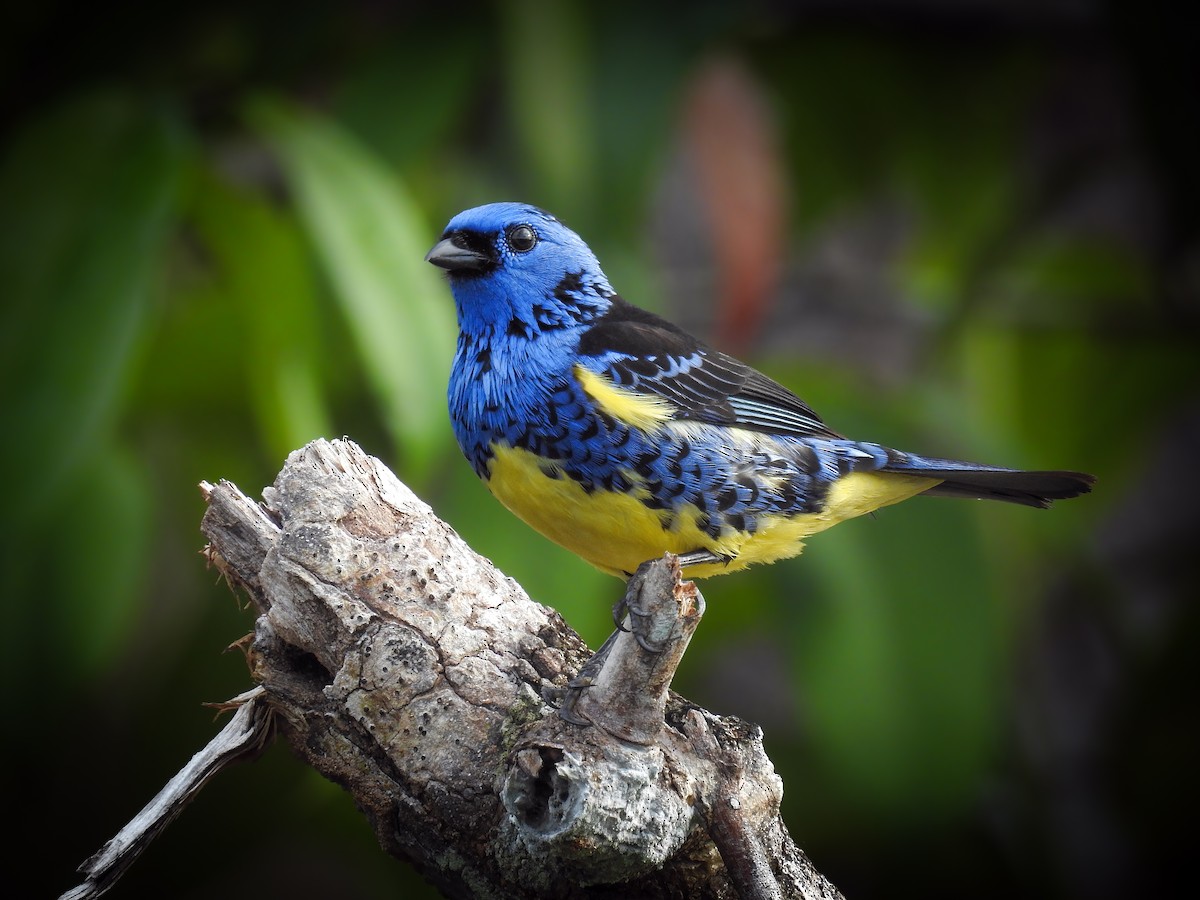
The turquoise tanager (Tangara mexicana) is a medium-sized bird measuring around 13 -14cm (5.5 inches) in length, including its tail. They weigh in at about 20 grams. Adult birds are mostly dark blue and black with turquoise edging along their primary wing feathers, as well as turquoise shoulder patches. Most species have yellow underparts, except the Brazillian species which is white.
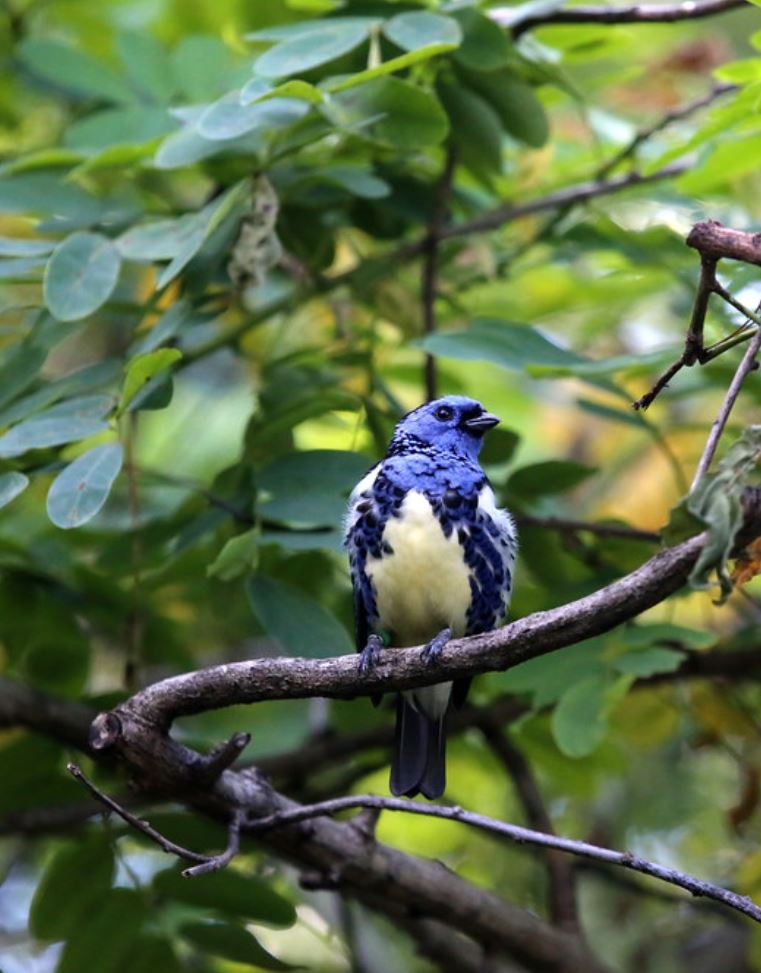
“TURQUOISE TANAGER” by cuatrok77 is licensed under CC BY-SA 2.0.
Birds from Trinidad, Tangara mexicana vieiloti, have a darker blue head and breast and brighter yellow underparts than the mainland race.
Brazillian birds, Tangara mexicana brasiliensis, have an overall paler blue plumage with dark spots on the throat and chest, blue edging to the primary flight feathers, and white underparts.
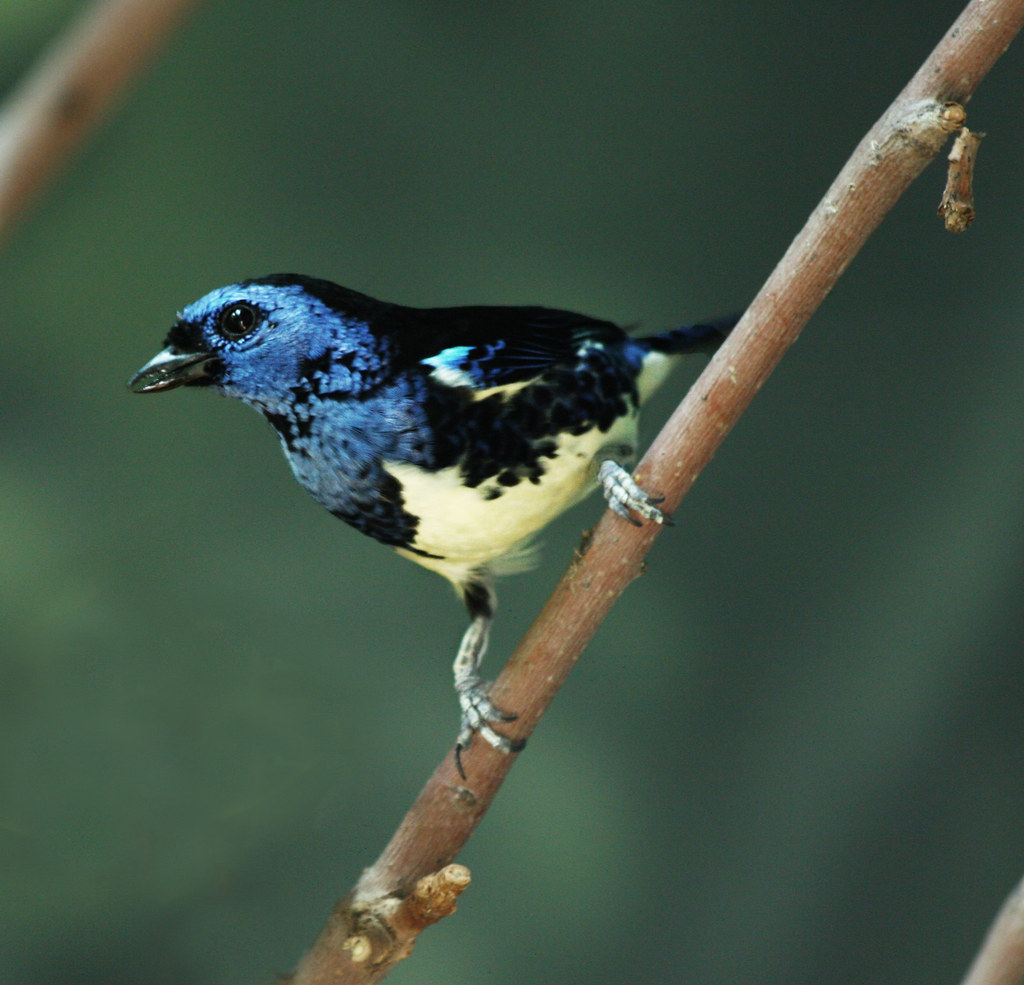
“Turquoise Tanager” by Rennett Stowe is licensed under CC BY 2.0.
This bird is resident to and from Trinidad, much of Brazil (despite its scientific name, it is not found in Mexico), Colombia, and Venezuela south to Bolivia.
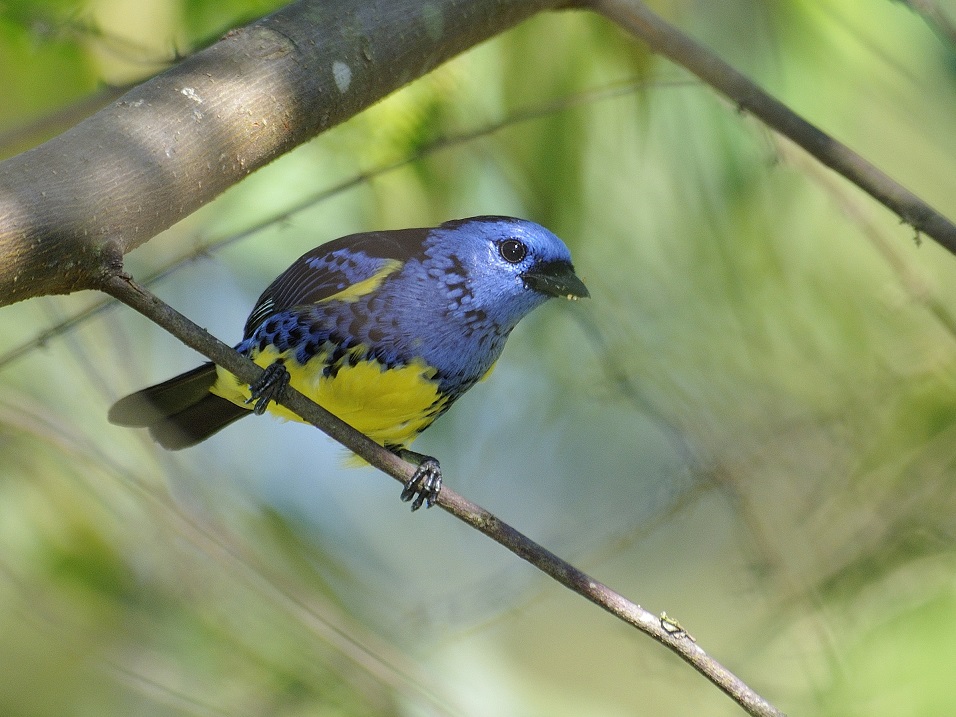
Photo Courtesy of Ingrid Torres de Macedo / CC BY-SA 4.0
Turquoise tanager like to live in areas with humid forests, usually at high levels but can be also found in semi-open areas such as open woodland and cultivated lands.
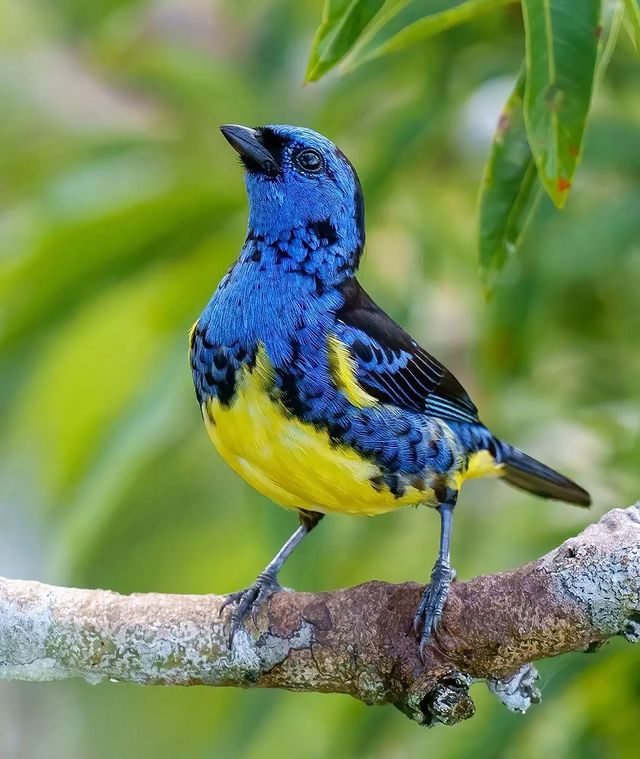
They like to dine on a wide variety of fruit as well as insects, flowers, leaves, and seeds.
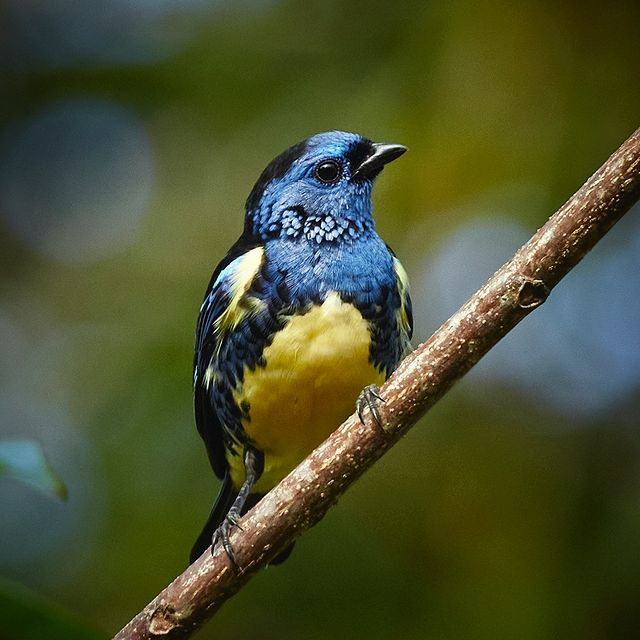
During the breeding season, Turquoise tanager pairs usually separate from the flock and go build bulky cup-shaped nests in trees or shrubs. The female will then lay 2 – 3 brown-blotched grey-green eggs within which she then incubates alone for about 12 to 14 days. Once the fledglings have hatched, the parents will return to the flock, returning to feed their young.

Populations of this bird are considered stable, and the IUCN lists the Golden-hooded Tanager as a species of “Least Concern.”
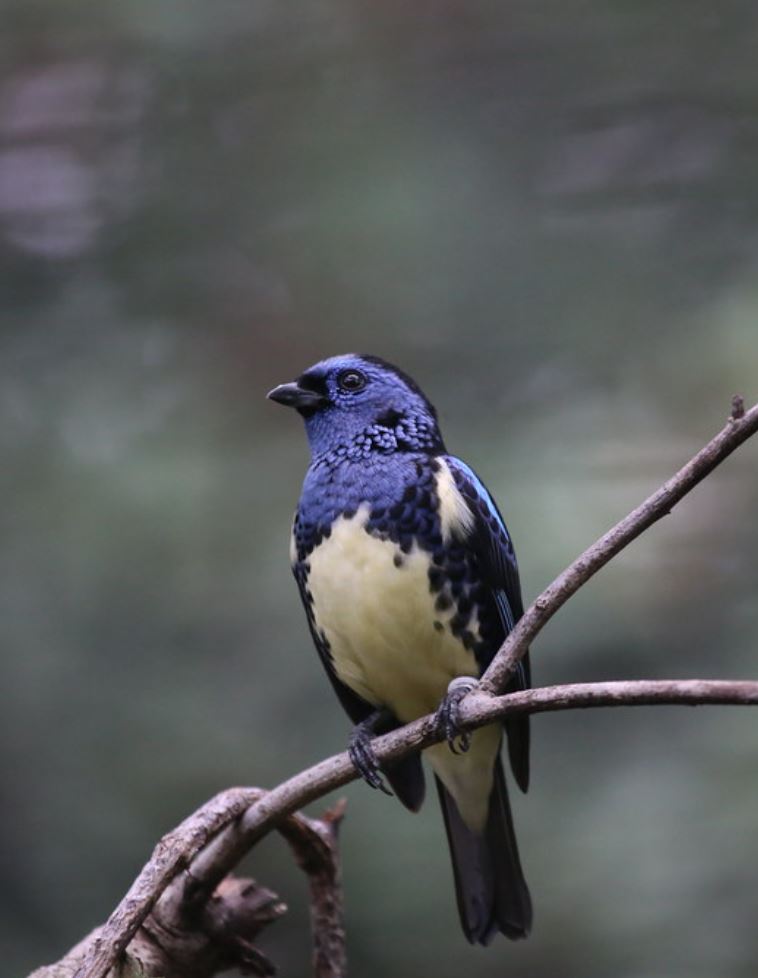
“TURQUOISE TANAGER” (cropped) by cuatrok77 is licensed under CC BY-SA 2.0.
You can watch this bird right here in the video below:




